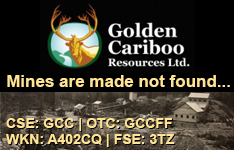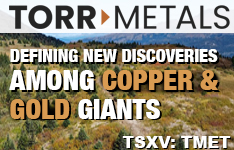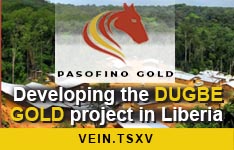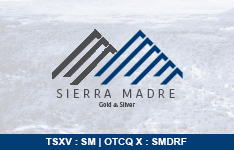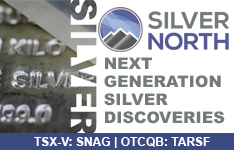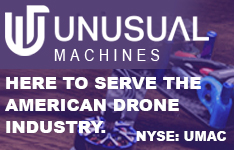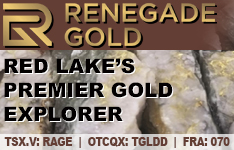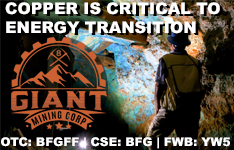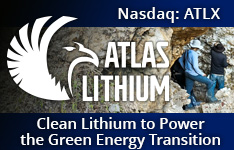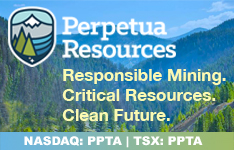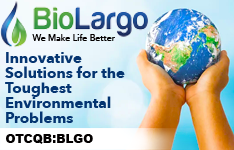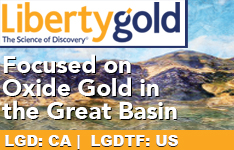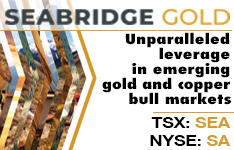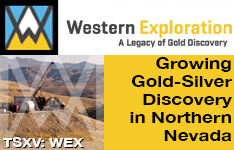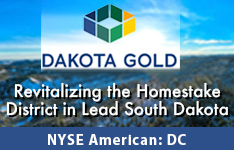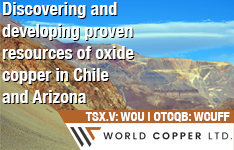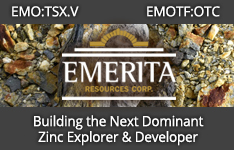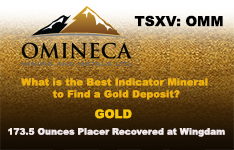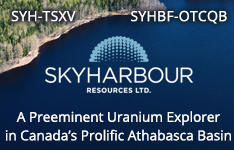The Life Sciences Report: Steve, you wanted to address Ebola virus disease (EVD) from a socioeconomic point of view. Please give us your thoughts on the stress EVD could put on healthcare systems in the U.S. and worldwide.
Steve Brozak: Let me start by paraphrasing a quote that I heard from a very smart person. Ebola is a horrific disease, and because of that, unfortunately, it is the first made-for-television disease that we've witnessed. It will not be that long before we see some major Hollywood studio make a movie about the events we're looking at on the news today.
But I don't think people who are watching—and certainly not a large part of the investing community—really understand EVD or its ramifications. That really is the most insidious part of this disease—the fact that it is not understood.
TLSR: How is EVD not understood?
SB: What people don't understand is that it is impractical to carry out mass treatment protocols here in the U.S. You cannot set up every single facility in this country to deal with Ebola. Even setting up specific centers to deal with something like Ebola is impractical. It is far more practical, far more efficacious, far more efficient and far more humane to deal with Ebola at its center, which everyone acknowledges is in West Africa. That's what people don't understand, unfortunately. Instead, the media have been reporting on facilities in Dallas, Atlanta and New York, and making observations about the patients who are being treated there.
"NeoStem Inc. will announce results from its Phase 2b PreSERVE-AMI trial on Nov. 17."
The reality right now is that we are at a critical juncture. Médecins Sans Frontières (MSF; Doctors Without Borders) has been the only organization that has been coherent in providing healthcare infrastructure in West Africa. However, MSF is depleted to the point where the U.S. Centers for Disease Control (CDC) can no longer stand by. CDC is actively recruiting people to assist with the MSF mission in Africa, but this is not a one-for-one fit, because we are not very well versed in this kind of venture. We are entering into uncharted territory that, candidly, gives me great cause for concern.
TLSR: Aside from the vicious nature of the disease and the fact that some healthcare workers have been infected, what is it that gives you great concern right now?
SB: I'm concerned when I see, in newspapers, online or on TV, people making assumptions that there are drugs or products available today that will save the day. That is simply not factual. Yes, there are noteworthy products, but there is a very unfortunate dichotomy in that the products we know a lot about don't really work, and we don't have enough of the products that seem to be efficacious. Everyone is finger-pointing, but the reality is that we are not addressing the issues that we have to address.
TLSR: Steve, you have said we really do know how to manage viral disease outbreaks like this one. What is the evidence for that? Give me an example.
SB: Having covered pandemics and epidemics now for ten years, I would say that, for the first time, we actually understand how to control an outbreak like this, and it's only because of significant government spending for other threats.
"Omeros Corp.'s Omidria is FDA-approved, proven sterile and safe, and reimbursable by payers."
For example, take H5N1, or bird flu. A decade ago, everyone said that bird flu was going to come to the U.S., but it didn't. We still set up and retooled our vaccine systems in the U.S. in response to the threat. If we hadn't done that, imagine where we would be today. H1N1, or swine flu, literally became a pandemic in 2009, and in 2014 it is firmly entrenched in the influenza ecosystem here in the U.S. We caught this problem at the last possible moment—H1N1 became the first instance where we could understand a threat and stop it using the infrastructure our government invested in. That was possible because our government invested in a diagnostic mechanism in preparation of bird flu that allowed us to check for unusual viruses. It was the surveillance tool we developed for H5N1 that saved us from H1N1. Today, when you get your regular seasonal flu vaccine, you receive protection from H1N1. All this was possible because of government funding.
TLSR: Would you briefly mention a few companies offering some promising ideas to combat EVD?
SB: I'll go over companies that are interesting, and I’ll also explain the shortcomings of each. We need to understand the limitations and strengths of each technology, because Ebola is not an isolated incident. It is unfortunate, but predictable, that there will be more outbreaks, and we have to be prepared. That is the reality.
Everyone looks at Mapp Biopharmaceutical Inc.'s (private) product, ZMapp (three chimeric monoclonal antibodies manufactured in tobacco plants, specifically Nicotiana benthamiana). If anyone says the government isn't responsible for advancing science, they should understand that ZMapp is prima facie evidence for government support in advancement of drug development, drug manufacturing and everything related.
ZMapp was funded by the U.S. via the U.S. Army Medical Research Institute of Infectious Diseases (USAMRIID). Its production was accelerated by USAMRIID personnel, who have assisted in differentiating the antibodies that would work with the greatest efficacy. The only difficulty is that the production method for ZMapp is plant-based which, in itself, is a very good technology, but doesn't lend itself for large, ramp-up manufacturing. As such, we have to wait. That is ZMapp's limitation.
"It is far more practical, far more efficacious, efficient and humane to deal with Ebola at its center, in West Africa."
Another company working in the area is Chimerix Inc. (CMRX:NASDAQ), which has a broad spectrum antiviral called brincidofovir that has been funded by the U.S. National Institutes of Health and is now in Phase 3 trials for cytomegalovirus and other viruses in bone marrow transplant patients. It's also a potential therapy in adenovirus.
Chimerix's program is also being funded by the U.S. Biomedical Advanced Research and Development Authority for treatment of smallpox under the Animal Rule. This rule allows drugs or biologics to pursue regulatory approval to become part of the national strategic stockpile based on preclinical studies in animals and safety studies in patients. Brincidofovir may also be applicable to EVD, but again, we have a product that you can't test in nonhuman primates for EVD because there is no cross-reactivity there. It's a bit of an unknown, which is problematic. There's just not enough information for anyone to expect a specific outcome. A Phase 2 protocol has been developed with the U.S. Food and Drug Administration (FDA), and the investigational new drug application has been authorized to test brincidofovir in Ebola patients. This trial could begin anytime.
Then we have BioCryst Pharmaceuticals Inc. (BCRX:NASDAQ), which is also working with a government contract. Its candidate, BCX4430 (an adenosine analog), is another broad-spectrum antiviral. We could see testing in humans in H1/15. This drug platform represents important technology, but we will take a wait-and-see approach as to what it can do specifically in EVD.
I'm very interested in Tekmira Pharmaceuticals Inc. (TKMR:NASDAQ; TKM:TSX). Again, it has seen government resourcing, and it is working with a good technology, RNA interference (RNAi). The company has begun to manufacture, on a limited basis, a new therapeutic agent specifically targeting the Ebola-Guinea variant, which is responsible for the EVD epidemic now in West Africa. There will actually be some supply available for investigators in early December, but again, these will be limited quantities. What we need is a product that can be manufactured in such a way that we can actually start to test it, and compare it in actual field use. That doesn't exist here.
"People are making assumptions that there are drugs or products available today that will save the day. That is simply not factual."
I want to mention one company that, believe it or not, people are not talking about with regard to EVD, Sarepta Therapeutics Inc. (SRPT:NASDAQ). In the past, I didn't believe Sarepta's approach to FDA testing was going to pass muster, and I took a lot of grief for that. But the company got response back from the FDA, and we started to see the agency ask good questions about how to test Sarepta's EVD candidate, AVI-7537, and how to implement its technology. Sarepta has a program we believe in because it can manufacture its antisense products to scale. I'm not going to say the product can be manufactured quickly, but it can be made in a realistic amount of time, with the ability to test for efficacy. This is something that I think should be explored, and if it works, should be exploited.
TLSR: What about big pharma? Which companies have joined the Ebola fight?
SB: Johnson & Johnson (JNJ:NYSE) says it is dedicating itself to creating a vaccine answer. The company has a technology that is fairly easy to understand. Again, the difficulty is that standard vaccines require time to make. The same goes for GlaxoSmithKline (GSK:NYSE)). Your readers should keep in mind these are incredibly large organizations that are not as focused on a response to EVD as the smaller biotechs we have discussed.
TLSR: On Nov. 4, Republicans took control of the U.S. Senate, and now they control both houses of Congress. What do you think the political environment is going to be with regard to funding research? Do you imagine that the majority in Congress is going to continue to be resistant to investing in basic science?
SB: I would say to those who now control both houses of Congress, be very careful what you ask for, because you may very well get it. If you do get your cuts, you will be held responsible for what takes place on your watch.
Also, expecting a quarantine or blockade to stop Ebola is foolishness. If politicians espouse something like that, there will be a response, but it will not be the response that they want. I would say to you that the longer we do not address this issue globally, beginning in West Africa, the more expensive this outbreak will be in, both currency and human life.
TLSR: Steve, if you have thought about this, what do you think happened at Texas Health Presbyterian Hospital in Dallas? One would have to assume that this institution has a top-flight intensive care unit, but the hospital failed to protect its health workers. How did two nurses become infected with EVD in a U.S. hospital after treating an EVD patient?
SB: We looked it over and came to the conclusion that it was a simple rule of physics. The patients who suffer through Ebola throw off waste products the likes of which no one experiences typically. Your focus as a healthcare provider is to be humane and maintain certain standards; however, the realities are that the amount of waste generated in the form of feces, vomitus, blood and blood products is so significant that containment without proper protocols and enough personal protective equipment is difficult. There is an unavoidable degradation in care and technique—at least when the providers haven't had previous experience in this disease. It's not like anyone can perform at 100% under these circumstances, so mistakes happen. When mistakes happen, unfortunately, the costs are high. These systems will undoubtedly improve. Hospitals all over the country are now working on protocols.
TLSR: Steve, you have a large list of small-cap companies in your coverage. Looking away from Ebola for the moment, could you mention a few names that you feel have impressive growth prospects?
SB: There are five companies with seminal moments on the horizon, and exciting technologies that are not flash-in-the-pan approaches. Looking back at Sarepta and Tekmira, you see technologies that are going to change the way drugs are developed. That kind of change presents significantly important considerations for investors. Instead of getting a 28% return annualized for a year and a half, you might now get a tenbagger, which is the ultimate return that small-cap investors seek.
TLSR: Go ahead with the first name.
SB: It's a stem cell company called NeoStem Inc. (NBS:NASDAQ). On Nov. 17, at the American Heart Association's annual meeting, the company will announce results from its Phase 2b PreSERVE-AMI trial with NBS10 (autologous bone marrow-derived CD34+/CXCR4+ enriched cells) to treat damaged heart muscle following an acute myocardial infarction (AMI). PreSERVE-AMI is a smaller trial, with 160 patients, but it's double-blind and placebo-controlled. This is a different kind of technology that we like very much because NBS10 has potential to be a restorative product. I look forward to seeing the results.
[Editor's note: Following NeoStem's Nov. 17 announcement, Mr. Brozak provided the following: "This year, around 700,000 Americans will have a stent implanted. This type of surgery fails to reduce arterial narrowing in one of four patients. Sometimes riskier coronary bypass surgery is recommended after stent implantation. To say stents have limited efficacy and considerable risk would be an understatement. It is clear there is a viable market for safer and more efficacious treatments, and NeoStem's NBS10 could meet that dire treatment need.
The recent Phase 2 results with 161 subjects show that NBS10 is safe, well tolerated and leads to statistically significant reduction in mortality, and higher doses were found to have lower rates of major adverse cardiac events. Undoubtedly, NBS10 is a technology that can complement, if not altogether replace, existing acute myocardial infarction treatments. More than that, NBS10 is a stem cell-based platform that can define a new paradigm. Whenever you have this hallmark, expect people to take time in understanding the new data and the advocacy for its advantages."]
TLSR: Another name, please.
SB: The next would be Omeros Corp. (OMER:NASDAQ)). Its product, Omidria (phenylephrine + ketorolac), was approved on May 30 of this year. Omidria is a simple combination of two older drugs that have been in the public domain for quite some time. One is a mydriatic or pupil-dilating agent, and the other is an anti-inflammatory and analgesic. The product was designed for use in cataract and intraocular lens replacement surgery, and it results in patients having less post-operative pain. The company will start selling Omidria on Jan. 1, 2015, and just recently, on Oct. 30, the product received pass-through reimbursement approval from the Center for Medicare & Medicaid Services. Now Omidria can be reimbursed by Medicare, Medicaid and many private insurers beyond the cost of the surgical procedure itself. Omeros' reimbursement will be based on the product's wholesale acquisition cost of $465 per single-use vial, which would cover a single procedure.
TLSR: Steve, ophthalmologists have been using these same drugs as homebrews, or getting them from compounding pharmacies, for a very long time. What's the value proposition for Omidria?
SB: Instead of having to use compounded products or homebrews to do lens surgery, the surgeon can now use a product that is FDA-approved, proven sterile and safe, and reimbursable by payers. Physicians should be using it as standard of care. I don't think there is an obstacle to adoption of Omidria at this point.
TLSR: Another name?
SB: We have covered Navidea Biopharmaceuticals Inc. (NAVB:NYSE) for a long, long time. Back in mid-June, the company received FDA approval for intraoperative sentinel lymph node mapping for head-and-neck cancer with its radiopharmaceutical agent, Lymphoseek (technetium Tc 99m tilmanocept). Back in March 2013, Lymphoseek was approved for lymphatic mapping in breast cancer and melanoma. With Lymphoseek, the surgeon uses a gamma detector to assist in finding diseased lymph tissue to dissect out. It's a way of preventing metastasis by removing tumor-draining lymphatics that contain active tumor cells.
"H1N1 became the first instance where we could understand a threat and stop it using the infrastructure our government invested in."
By the FDA's own description, Lymphoseek represents the greatest improvement it has seen in 30 years for the head-and-neck cancer application. There is just no comparator. It is also interesting that this technology guides clinicians to inflammation, which means there's potential for many different diagnostic, and possibly even therapeutic, applications. Hospitals are now reevaluating all their detection approaches, and we believe that they will be looking at Lymphoseek very seriously.
TLSR: After Lymphoseek was first approved in 2013, Navidea partnered with Cardinal Health Inc. (CAH:NYSE), a major distributor of radiopharmaceuticals. Is Cardinal Health giving its best effort in marketing Lymphoseek? How is this working out?
SB: Cardinal plays an important role for Navidea, and brings a touch point to the nuclear pharmacist. While that's important, and continues to be important, it was more so with the prior label. With the new label, Navidea can establish a touch point directly with surgeons and additional decision makers on the treatment team. This is how Lymphoseek can displace a decades-old agent and a very entrenched mentality. Surgeons are set in their ways to use colloids, which are old agents. Now there's a label that differentiates Lymphoseek, and allows Navidea to call on the surgeon directly.
We're looking forward to seeing what Navidea's newly appointed CEO, Rick Gonzalez, has in store for 2015. His background is in managing commercial products, and their sales and marketing. On a recent conference call, he said that he's focused on enhancing Navidea's operations to help complement Cardinal's sales and marketing efforts. Navidea now has the right product with the right label and the right CEO.
TLSR: The next name?
SB: The next name is another company we've followed for a number of years— Cempra Inc. (CEMP:NASDAQ). It has an antibiotic called solithromycin, which we believe to be the single strongest antibiotic we have ever seen. It's a broad-spectrum antibiotic in the macrolide family. The significance is that solithromycin doesn't just attack bacteria, it prevents them from replicating within cell membranes. The antibiotic is in Phase 3 for community-acquired bacterial pneumonia. It can be used as step-down therapy from intravenous to oral administration, and that is a tremendous advantage.
Cempra has several ongoing collaborations with the U.S. government, through a contract valued at $58M in nondilutive funding. The company has been able to leverage these programs to fund solithromycin's development in pediatric use. All of the pediatric development and trials are being paid for by the government, which is significant. The U.S. government is paying attention to this company.
"I would say to those who now control both houses of Congress, be very careful what you ask for, because if you do get your cuts, you will be held responsible for what takes place on your watch."
Viruses like EVD are awful, but with bacteria you are talking about bad bugs that could move through a population with equally disastrous results. Cempra has the ability, with solithromycin, to deal with not just the bad bugs we are aware of today, but with the bad bugs out there that could become more prevalent and dangerous in the future. This type of broad-spectrum antibiotic could be the only thing we have that could even attempt to address that kind of situation.
TSLR: Steve, go ahead with your last company.
SB: Tetraphase Pharmaceuticals Inc. (TTPH:NASDAQ) is another antibiotic company that's also working with the U.S. government. Its candidate, eravacyline, a next-generation tetracycline, is now in Phase 3 for complicated intra-abdominal infections, as well as complicated urinary tract infections. Tetraphase's product is in advanced trials, and we think it would be very attractive to potential big pharma partners. The physician community is very familiar and comfortable with tetracycline, and that will play well if Tetraphase is able get its next-generation version of the product to market. We have a Buy rating on Tetraphase.
TLSR: We covered a lot of ground today. Thank you.
SB: Thank you too.
 Steve Brozak is the managing partner and president of WBB Securities, an investment bank and financial analytical firm engaged in the biotechnology, pharmaceutical and medical device sectors. Before cofounding WBB Securities, he worked for several Wall Street firms, including Salomon Brothers, Dean Witter, Cowen & Company, and Alex. Brown & Sons. As WBB Security's Senior Equity Analyst, Brozak has been acknowledged for his investment acumen and equity research performance by the major analyst ranking systems. In 2013, he was selected as the #2 ranked analyst in the pharmaceuticals sector by the StarMine/Financial Times Industry Analyst Awards system. The Wall Street Journal distinguished Brozak as its Best on the Street Medical Equipment and Supplies financial analyst in its 19th Annual Best on the Street Survey in 2011. In 2010, Brozak received StarMine Thompson Reuters/Financial Times Best Brokerage Analyst award for his selection of top-performing companies in the biotechnology space. With a 25-year track record in banking and analysis in the life sciences space, Brozak also works as media commentator on the life sciences sector on the web, on television, and in print media. Brozak served in the United States Marine Corps and now serves on the Secretary of the Navy's Navy and Marine Corps Retiree Council, where he focuses on healthcare, benefits and other veteran issues. He received a bachelor's degree and a master's degree in business administration from Columbia University, and also holds FINRA licenses 3, 7, 8, 24, 63, 65, 79, 86, 87 and 99.
Steve Brozak is the managing partner and president of WBB Securities, an investment bank and financial analytical firm engaged in the biotechnology, pharmaceutical and medical device sectors. Before cofounding WBB Securities, he worked for several Wall Street firms, including Salomon Brothers, Dean Witter, Cowen & Company, and Alex. Brown & Sons. As WBB Security's Senior Equity Analyst, Brozak has been acknowledged for his investment acumen and equity research performance by the major analyst ranking systems. In 2013, he was selected as the #2 ranked analyst in the pharmaceuticals sector by the StarMine/Financial Times Industry Analyst Awards system. The Wall Street Journal distinguished Brozak as its Best on the Street Medical Equipment and Supplies financial analyst in its 19th Annual Best on the Street Survey in 2011. In 2010, Brozak received StarMine Thompson Reuters/Financial Times Best Brokerage Analyst award for his selection of top-performing companies in the biotechnology space. With a 25-year track record in banking and analysis in the life sciences space, Brozak also works as media commentator on the life sciences sector on the web, on television, and in print media. Brozak served in the United States Marine Corps and now serves on the Secretary of the Navy's Navy and Marine Corps Retiree Council, where he focuses on healthcare, benefits and other veteran issues. He received a bachelor's degree and a master's degree in business administration from Columbia University, and also holds FINRA licenses 3, 7, 8, 24, 63, 65, 79, 86, 87 and 99.
Read what other experts are saying about:
Want to read more Life Sciences Report interviews like this? Sign up for our free e-newsletter, and you'll learn when new articles have been published. To see recent interviews with industry analysts and commentators, visit our Streetwise Interviews page.
DISCLOSURE:
1) George S. Mack conducted this interview for Streetwise Reports LLC, publisher of The Gold Report, The Energy Report, The Life Sciences Report and The Mining Report, and he provides services to Streetwise Reports as an independent contractor. He owns, or his family owns, shares of the following companies mentioned in this interview: None.
2) The following companies mentioned in the interview are sponsors of Streetwise Reports: Omeros Corp., NeoStem Inc. The companies mentioned in this interview were not involved in any aspect of the interview preparation or post-interview editing so the expert could speak independently about the sector. Streetwise Reports does not accept stock in exchange for its services.
3) Steve Brozak: I own, or my family owns, shares of the following companies mentioned in this interview: Navidea Biopharmaceuticals Inc. I personally am, or my family is, paid by the following companies mentioned in this interview: None. My company has acted as a financial advisor with the following companies mentioned in this interview: NeoStem Inc., Cempra Inc. I was not paid by Streetwise Reports for participating in this interview. Comments and opinions expressed are my own comments and opinions. I determined and had final say over which companies would be included in the interview based on my research, understanding of the sector and interview theme. I had the opportunity to review the interview for accuracy as of the date of the interview and am responsible for the content of the interview, but refrain from investor suitability decisions.
4) Interviews are edited for clarity. Streetwise Reports does not make editorial comments or change experts' statements without their consent.
5) The interview does not constitute investment advice. Each reader is encouraged to consult with his or her individual financial professional and any action a reader takes as a result of information presented here is his or her own responsibility. By opening this page, each reader accepts and agrees to Streetwise Reports' terms of use and full legal disclaimer.
6) From time to time, Streetwise Reports LLC and its directors, officers, employees or members of their families, as well as persons interviewed for articles and interviews on the site, may have a long or short position in securities mentioned. Directors, officers, employees or members of their families are prohibited from making purchases and/or sales of those securities in the open market or otherwise during the up-to-four-week interval from the time of the interview until after it publishes.












